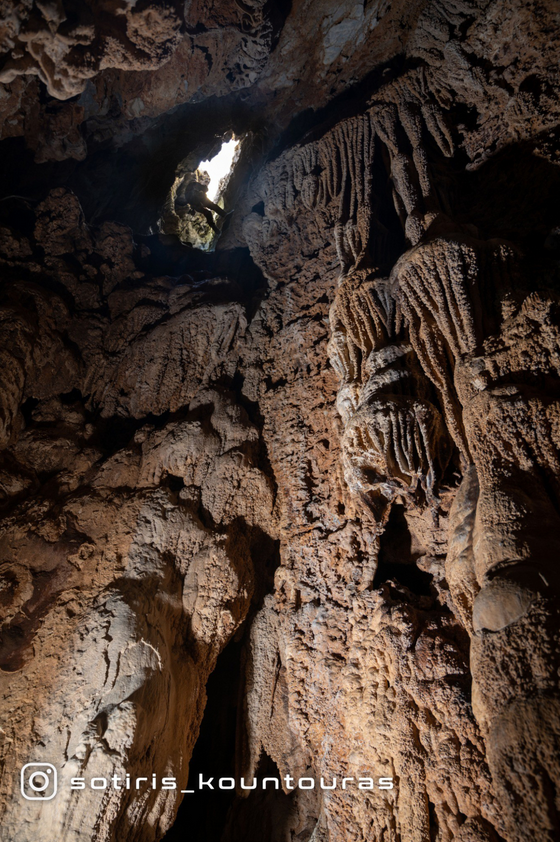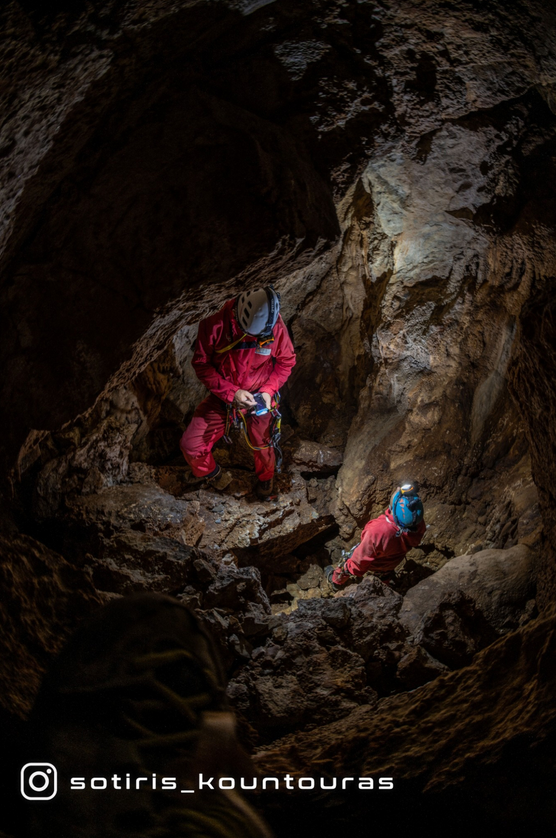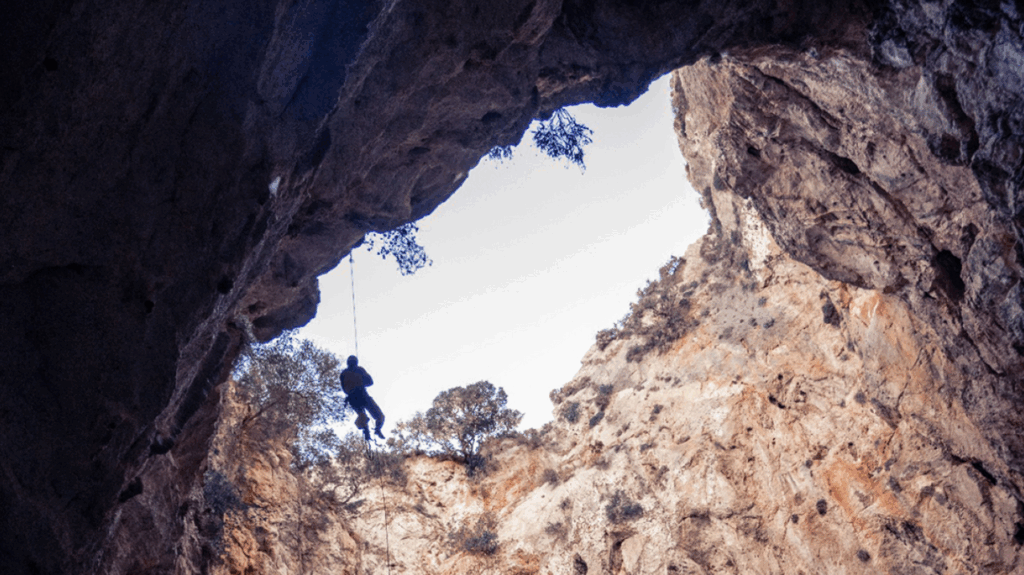The Cyclades’ deepest cave, reaching a remarkable depth of 132 meters and featuring stunningly decorative wells and chambers, was unveiled by a scientific expedition in the Agios Stefanos area of Amorgos. This discovery was prompted by a tip from a French island resident, leading to its official designation as “Vóthonas tou Gallou” (“The Frenchman’s Chasm”) and registration by the Ephorate of Paleoanthropology and Speleology.
The “Amorgos Cave Expedition 2024” took place last autumn, backed by the Municipality of Amorgos, and is set to continue this October. Expedition leader and organizer, cave explorer Prodromos Koulelis, noted that he was among those who managed to descend to the cave’s bottom, achieving a vertical drop of 90 meters in a single descent!


During a search for caves, Lonaïs, a local Frenchman, informed the team of a cave he had discovered during a walk near the village of Tholaria. Koulelis promised that if the tip was accurate, the cave would be named after him, leading to his joining the expedition. After navigating through rugged terrain filled with stones, brambles, and mastic trees, they located it. The cave initially descended around 35 meters but not continuously. Lonaïs, trained in rope descent, sought to explore further and, upon investigating, discovered an opening behind a large boulder that allowed access to the deeper sections of the cave,” Koulelis explained, noting that the term “vóthonas” refers to a vertical shaft or abyss in local terminology.
After his descent into this newfound cave, Koulelis described the awe and underlying fear that one learns to handle over time.


“Even as we continue to uncover new caves, the astonishing beauty of nature remains a constant delight—especially since so few ever experience such sights,” remarked Koulelis, who combines his work as a cheesemaker with his passion for speleology, humorously adding, “because I’m quite obsessed with it.”
The cave, currently the deepest in the Cyclades, was first documented in the fall of 2024, with biological samples collected and research findings anticipated for publication.


“We plan to return to Amorgos in early October,” Koulelis shared, “as local residents have tipped us off about other caves. We lack precise coordinates since many caves are unmapped, and sometimes they’re only discovered by squeezing into narrow openings—only to find expansive chasms inside.”
The Amorgos Cave Expedition 2024 team, consisting of 18 explorers and scientists, cataloged a total of 21 known and newly discovered caves and formations, with 12 thoroughly investigated and studied.
More information about the Amorgos cave expedition will be revealed during the Cavers Fest 2025 in Agrafa, Greece, scheduled for May 16 to 18, 2025.
Ask me anything
Explore related questions

















